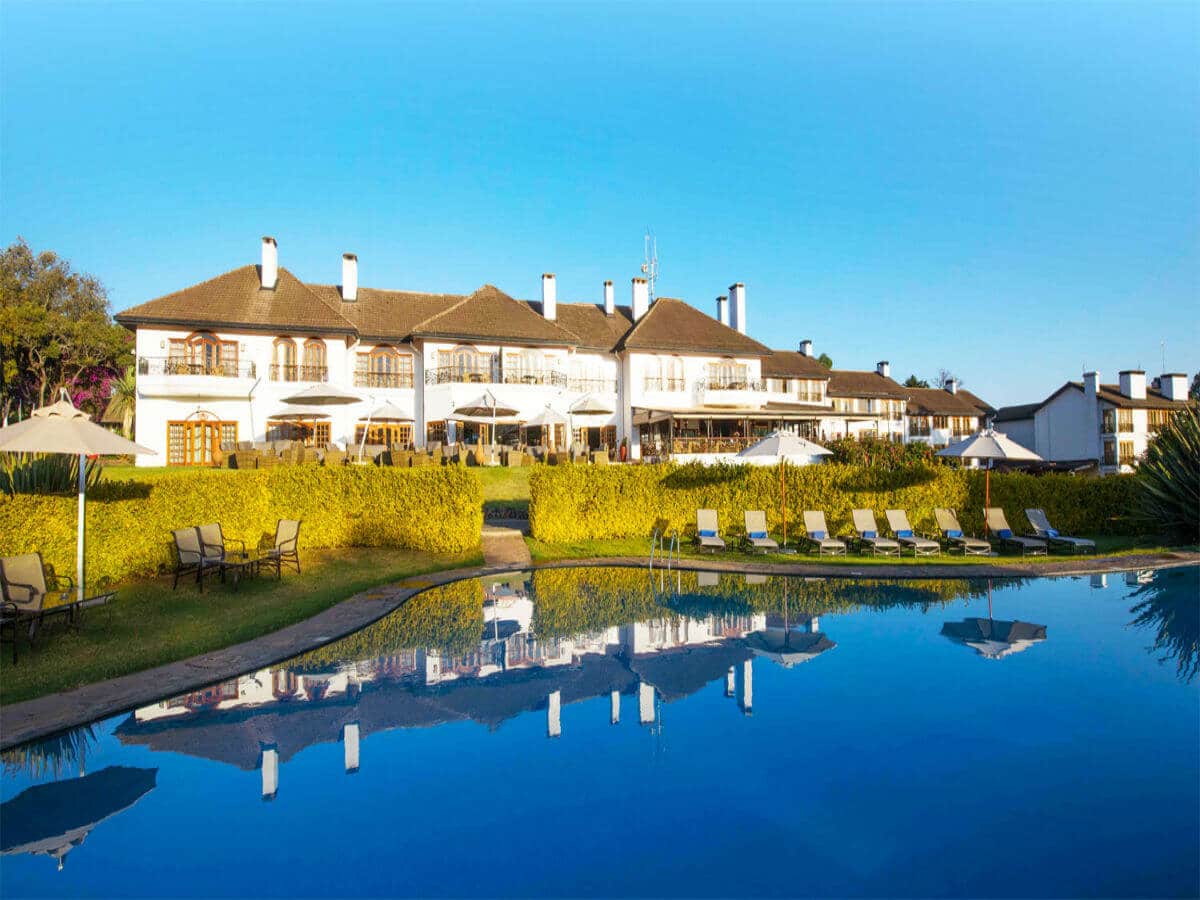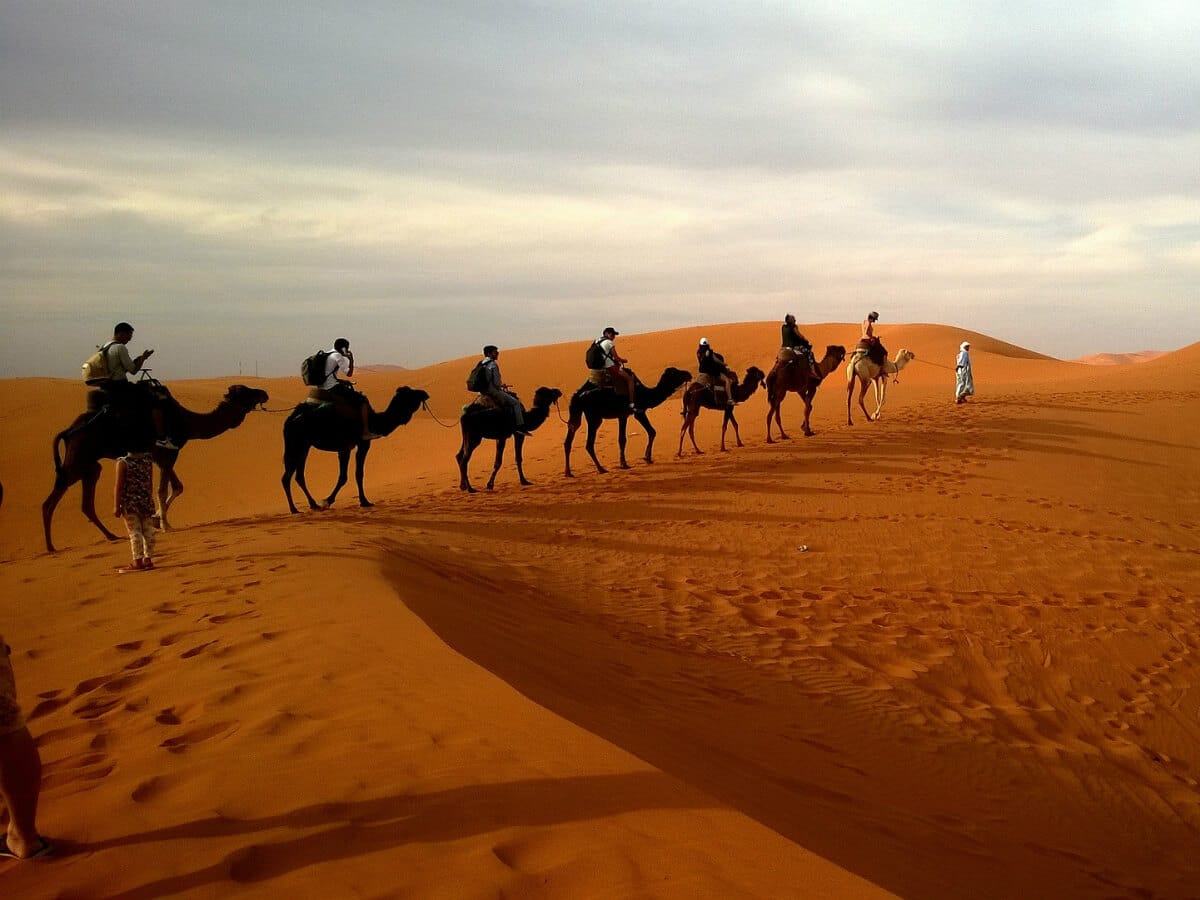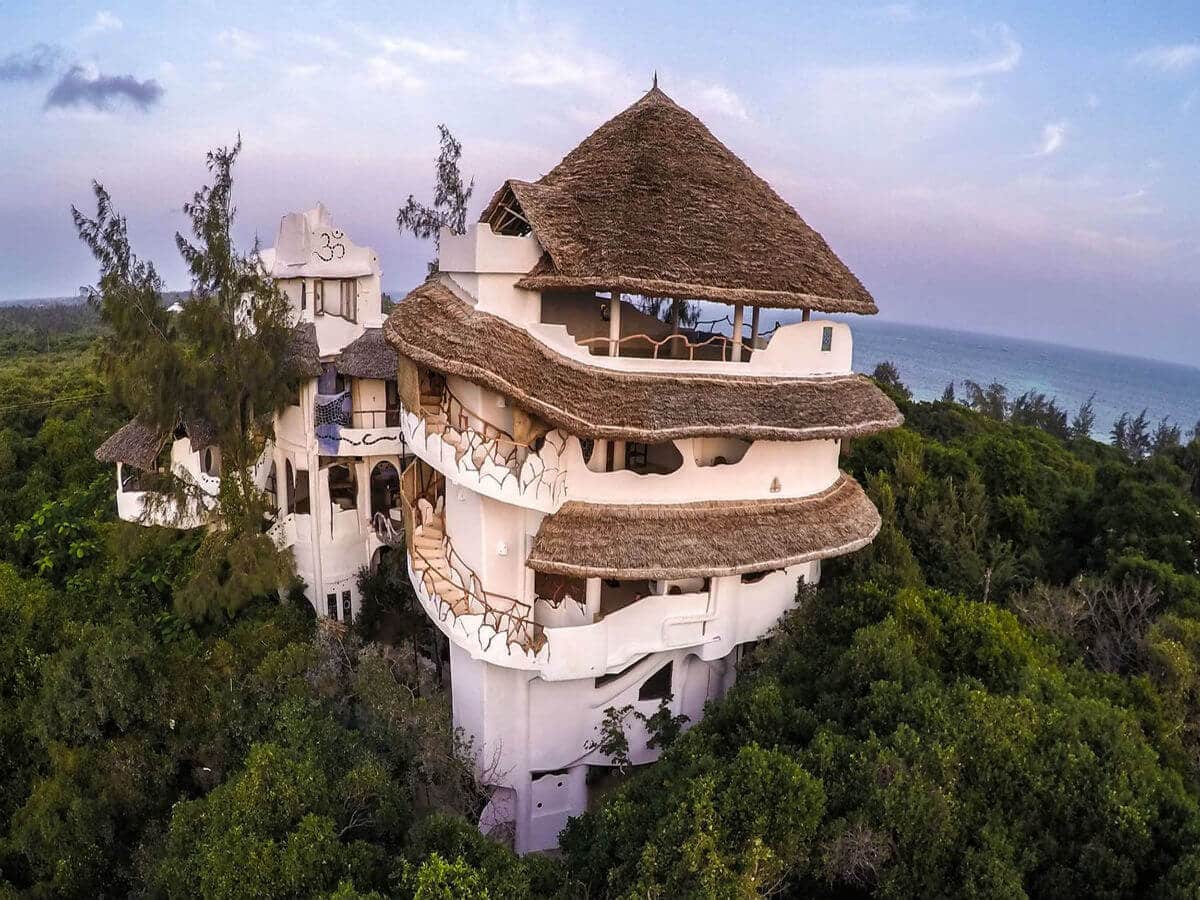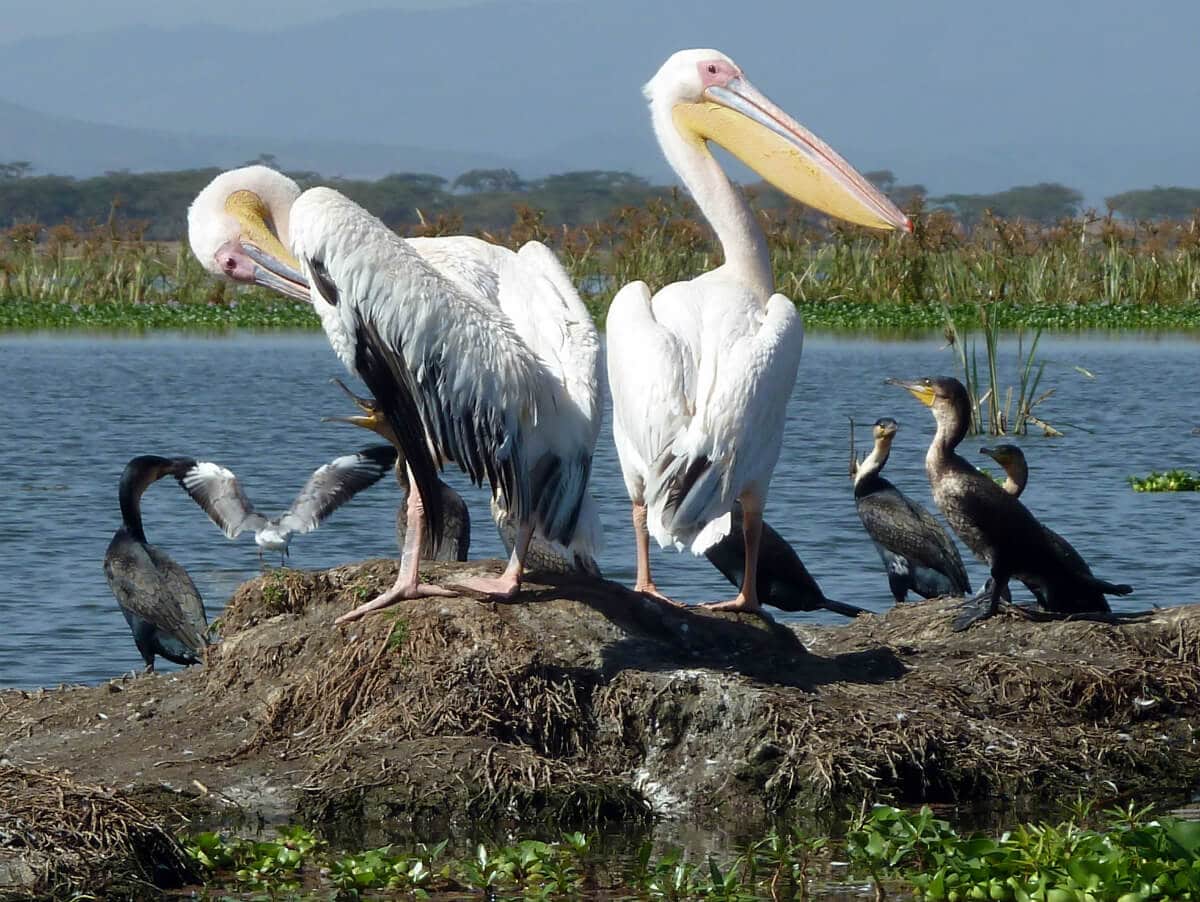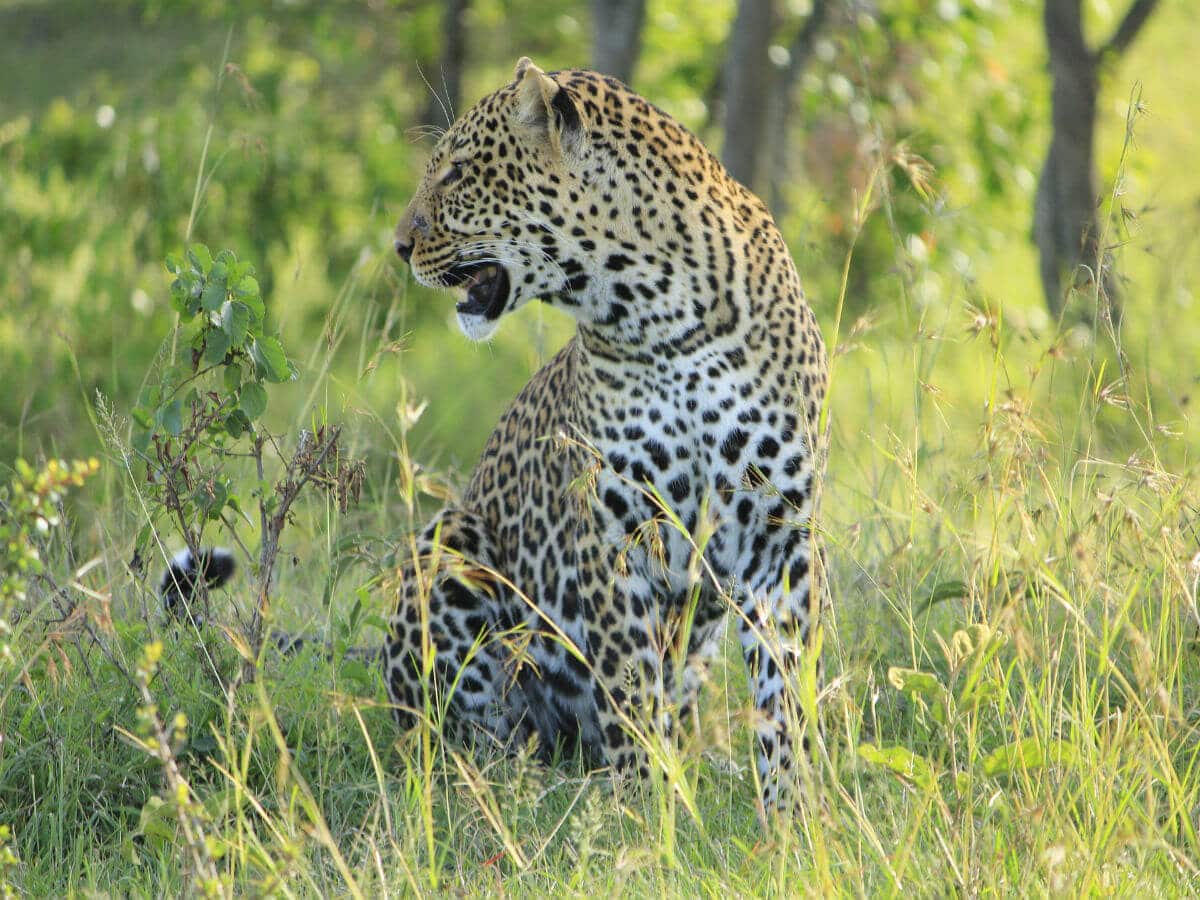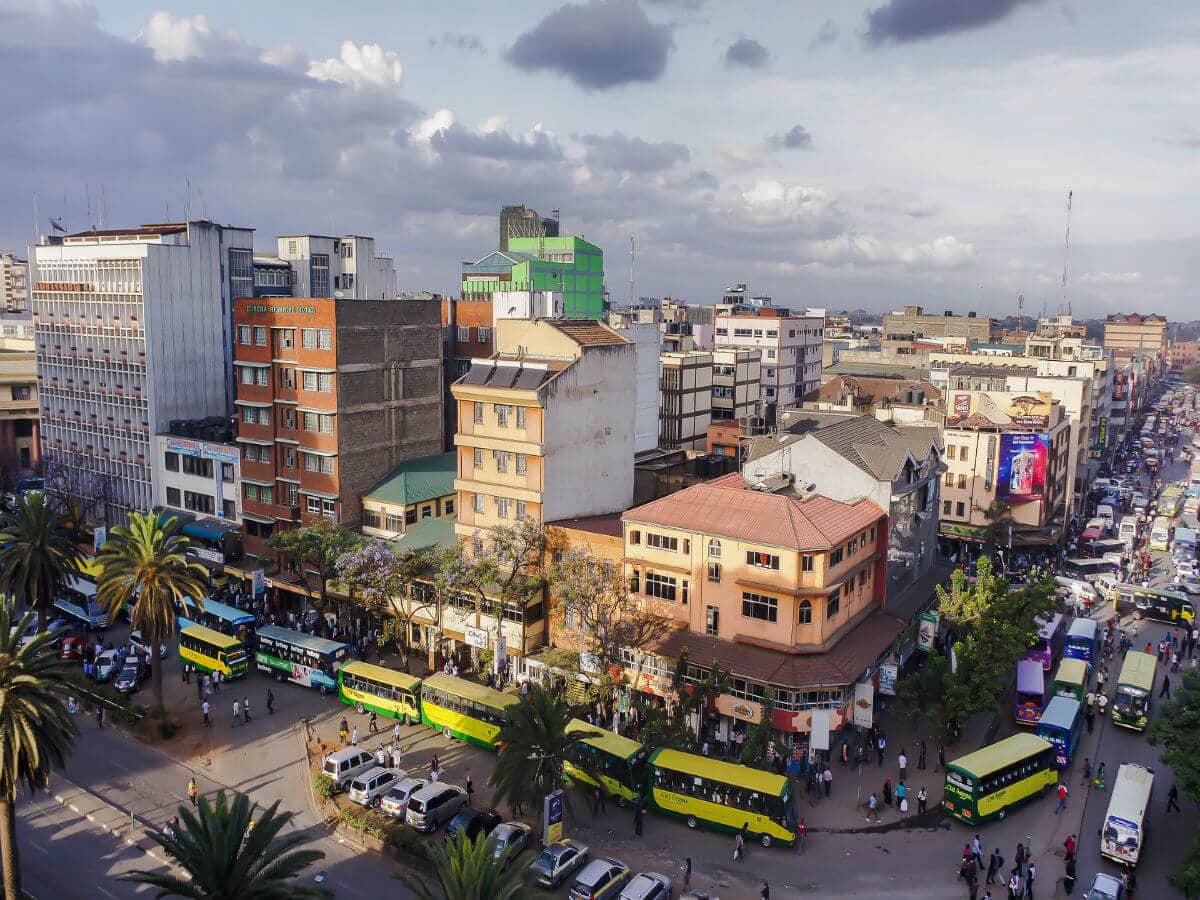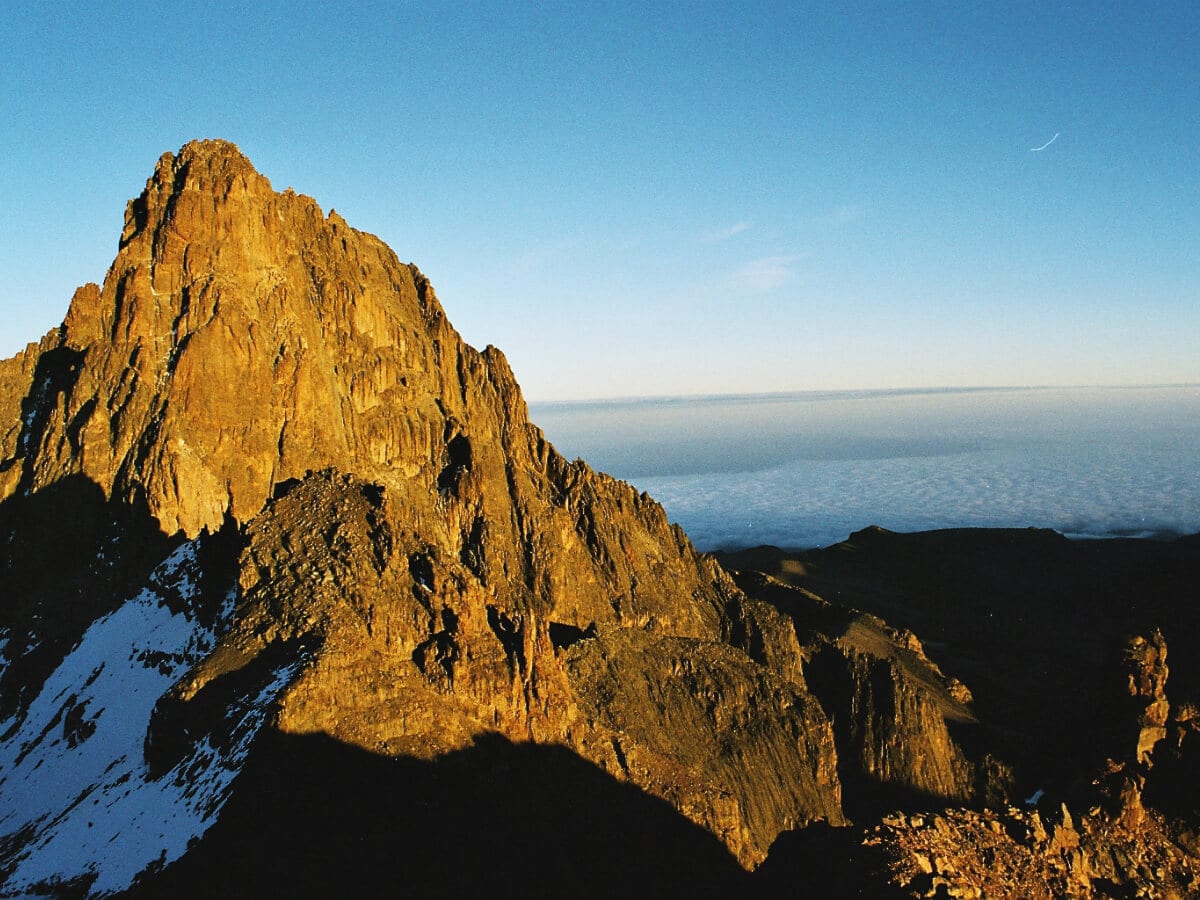Tour Packages
Kenya Tour Packages
SUPER DEAL PRICE
STARTS FROM
per person on twin sharing

ATMs are not easily accessible in all areas.

Credit cards are not widely accepted.

Finding a bank in Kenya can be challenging.

The legal drinking age in Kenya is 18.

Kenyan people are known for their hospitality.

Prices are typically cheaper in March and October.
Kenya - Visitors Statistics

Annually
17,50,000
Male51%
Female49%
By Purpose
Couples
For Newlywed Vacations
Family
For Family Vacations
Top Visitors from India
Mumbai
Delhi
Bengaluru
Chennai
Kolkata
Hyderabad
Pune
Ahmedabad
Jaipur
Lucknow
Everything You Need to Know About Kenya
Kenya is a magical place, both in terms of its beautiful wildlife and the amazing human history that unravels here. The huge human and pre-human fossil discoveries in Kenya make this place mankind’s oldest home where our collective umbilical cord lies buried. But there’s so much more than wildlife viewing and fossil gaping that you can do in Kenya. For one, its capital, Nairobi, is one of the world’s most unusual cities and the only place that houses a national park within its boundaries. Check out our Kenya tour packages if you plan to visit East Africa’s most popular destination.
Table of Content:
- About Kenya
- India and Kenya
- Tidbits
- Things To Remember When Booking Kenya Tour Packages
- Our Best Budget Kenya Tour Packages
- Kenya At A Glance
- Top Reasons To Visit Kenya
- Best Time To Visit Kenya
- Things To Do In Kenya
- Food And Cuisine In Kenya
- Dos and Don’ts For Indian Travellers
- Shopping In Kenya
- Art And Culture In Kenya
About Kenya
Kenya is a major economy on Africa’s east coast and is famous for its wildlife and diverse landscapes. Besides vast vistas of grassy lands, Kenya also has high mountains and dense forests. The country gets its name from Mount Kenya, Africa’s second-largest mountain. The name Kenya is in itself a mispronunciation of the Kikuyu word Kirinyaga, which roughly translates to god’s resting place.
It is now known that some of the earliest humans lived in Kenya millions of years ago. Over time, other indigenous tribes from across Africa migrated to Kenya, including the Cushitic speaking people from Northern Africa. Thanks to its proximity to the Arabian Peninsula, the region attracted Arab and Persian traders who indulged in the slave trade. Traders from across the globe, including Rome, India, and Greece, also visited Kenya. Swahili is believed to have developed as a lingua franca for trade between different communities and could be a mixture of Bantu and Arabic.
The Maasai tribes also migrated from the Lower Nile around the 16th century until they finally settled in Southern Kenya around the 18th century. Europeans first visited East Africa around the 15th century when the Portuguese tried to dominate the Indian Ocean trade. They were, however, driven out during the 1600s. In 1885, the Berlin Conference divided different African territories. The British established the East African Protectorate in 1895 and declared Kenya a British colony in 1920. The country managed to fight this, gaining independence in 1957.
Kenya is famous for its mind-blowing array of wildlife, including rare animals like the black and white rhino and the Nubian giraffe. But not many know that it has an equally beautiful coastline.
The people are warm, friendly, and happy to help. They are very polite, courteous, and accepting of different cultures and religions. Check out our Kenya tour packages if you’d like to explore this hidden beauty in East Africa.
India And Kenya
Indians first migrated to Kenyas as labourers on sugar plantations when the British created the British East Africa Protectorate, settling in Nairobi, Mombasa and other urban areas. Indians who subsequently arrived in Kenya took jobs as tradesmen, accountants, guards, etc., becoming a middle class and a buffer between the few white colonials and the large mass of African subjects.
Indians have blended well into the Kenyan community so much so that they are recognised as the 44th tribe in the country. Their influence is seen primarily through food, especially chapatis, samosas, bhajiyas, and chutneys.
Tidbits
- The oldest human fossil, the Turkana Boy, was discovered in 1984 in Nariokotome, Kenya. He is believed to have lived over 1.5 million years ago.
- The Kalenjin tribe of Kenya are believed to be the fastest runners in the world.
- The country is named after Mt Kenya – the second-highest mountain in Africa.
- The name Kenya is loosely derived from Kirinyaga, meaning God’s Resting Place.
- The world’s first woman to win a Nobel Peace Prize is from Kenya – Gary Mathai.
- Kenya has the highest number of national parks in Africa – 50.
- Kenya is splitting into two – The East African Rift could possibly give birth to a new ocean.
- It is home to the Masai Mara, the world’s most famous animal reserve and home to the largest concentration of big cats.
- Kenya is the world’s largest exporter of cut flowers, earning the country over $1 billion in revenue.
- The Umoja village in Kenya is an all-women village where men may visit but not live.
- The Maasai warriors can jump as high as up to 8 feet.
- Kenya is literally Middle Earth – The Equator Line passes right through Kenya, almost slicing it in half.
- The Wildebeest Migration is one of the 7 new wonders of the world.
- Kenya is the world’s 6th largest exporter of avocados.
Things To Remember When Booking Kenya Tour Packages
- Kenya is visa-free for Indians. However, you will need an eTA 72 hours before their travel.
- Single-use plastic is banned in Kenya. Do not carry carrier bags, straws, single-use water bottles, etc.
- Plastic bottles are banned in national parks. Carry a reusable water bottle.
- Indians need the Yellow Fever vaccine to travel to Kenya.
- Carry a mosquito repellent and wear long-sleeved shirts to avoid mosquitoes.
- Check with your tour manager if you need anti-malaria tablets.
- Wear muted clothes for safaris as bright-coloured clothes could disturb animals or draw their attention.
- Smoking in public places is prohibited across Kenya
Our Best Kenya Tour Packages
| Kenya Tour Packages | Duration | Highlights |
| Safari Adventure in Kenya | 5 Nights 6 Days | Maasai Mara, Lake Nakuru National Park, Lake Naivasha, Nairobi |
| Safari Adventure in Kenya – Arusha to Tarangire | 6 Nights 7 Days | Lake Manyara National Park, Serengeti, Ngorongoro, Tarangire, Arusha |
| Wildebeest Migration Tour | 6 Nights 7 Days | Nairobi, Maasai Mara, Lake Nakuru, Aberdares, Mount Kenya |
| Kenya’s Wildlife Extravaganza: The Ultimate Samburu Safari | 7 Nights 8 Days | Nairobi, Samburu, Aberdares, Lake Nakuru, Maasai Mara |
Kenya At A Glance
| Category | Details |
| Country | The Republic of Kenya |
| Capital | Nairobi |
| Language(s) | English (O), Swahili (O), Kikuyu, Dholuo, Kamba |
| Currency | Kenyan Shilling (KES) |
| High Season | July to August |
| Iconic Attractions | Maasai Mara, Nairobi National Park, Amboseli, Samburu Natural Reserve, Lake Nakuru, Lake Naivasha, Nairobi |
| Popular Activities | Jeep safari, Stay at Giraffe Manor, Wildebeest Migration, Hiking, Cycling, Bungee Jumping, Scuba Diving, Rock Climbing, Dhow Cruising. |
| Visa | Visa Free with eTA for up to 90 days |
| National Animal | Lion |
| National Flower | Orchid |
| Famous Food | Nyama Choma, Ugali, Irio, Mandazi, Nyama |
| Standard Voltage | 230 to 240 volts. Sockets require a 3-pin variety |
Top Reasons To Visit Kenya
With its majestic landscapes, endless savannahs, and diverse wildlife, Kenya is a dream destination for travellers looking for a life-changing experience. But it is equally famous for its sandy beaches, UNESCO World Heritage Sites, and fossil ruins of early humans. Here are some reasons you must sign up for a Kenyan tour package.
The Wildebeest Migration
Each year, over 2 million ungulates, including gazelles, wildebeest, and zebras, migrate from Serengeti, Tanzania, to the Maasai Mara in Kenya, traversing over 2,000 miles in search of greener pastures and freshwater resources. These animals follow a broadly predictable pattern but not a particular route while migrating. Although the migration timing depends upon the rainfall pattern each year, it’s now possible to predict where and when you can find the densest population of animals.
Around February, the wildebeest gather around the fringes of the Serengeti, simultaneously giving birth, leading to a rapid increase in their population. Over the months, they traverse different areas of the Serengeti, finally converging at the north of the Maasai Mara from June to August, where they will graze until October- November. Later, they return to the short grass plains of the Serengeti.
These migrating animals attract carnivores, including leopards, lions, cheetahs, hyenas, and wild dogs, looking to feed on the calves and carcasses of animals that die of disease or exhaustion. The rivers also attract thousands of crocodiles that come to feed on the animals crossing the water bodies.
This is one of the most spectacular sights in nature and is even named one of the Seven Wonders of the New World. For one, how do these animals know where they must travel? How do they decide about the right time to migrate? Most importantly, what triggers the widely scattered feeding animals to shift and congregate?
If you’d like to include the Wildebeest Migration in your Kenya tour package, make sure you let us know in advance. This is peak tourist season and camps or safaris must be pre-booked.
The Extraordinary Wildlife
Kenya has an extensive population of ungulates: hartebeest, wildebeest, zebra, gazelles, waterbucks, impalas, and buffaloes. It is also home to highland predators like lions, cheetahs, wild dogs, hyenas, black-backed jackals, and Serval cats. The African savannah elephant is another animal found in large numbers in Kenya. While Kenya is home to the Big Five – lions, leopards, rhinos, elephants, and buffaloes, it is the only country in the world where you can find black leopards, polka zebras, white giraffes, and spotless cheetahs.
The country’s marine waters are home to dolphins, dugongs, turtles, whale sharks, and different species of corals.
Animal Safari
From the plains of the Maasai Mara to the heights of Mount Kenya, Kenya offers dream safaris that you will never forget. The best thing about safaris in Kenya is that you don’t have to travel far – there’s one right in the middle of Nairobi city where you can watch lions, leopards, rhinos and other animals from close quarters.
Depending on your budget, you can choose from top-end safaris featuring private bathrooms, gourmet dining, sizable rooms, and even gyms to minimalist mobile tented camps with basic facilities like shared bathrooms and bed rolls. Most camps and lodges offer 2 game drives per day – one in the early morning and the other in the late afternoon. And if you are staying in a private conservatory, you can also enjoy a nocturnal game drive. To the uninitiated, game drive refers to a safari on a 4×4 vehicle, typically with three rows of seats. We suggest opting for camps that limit the size of passengers to six so everyone can enjoy a window seat. Also, opt for open vehicles or extra-large removable windows.
In addition to game drives, you can enjoy a host of thrilling activities, including gorilla trekking, quad biking, cycling tours, hot air balloon rides, and boating excursions. This largely depends on your budget and the type of Kenya tour package you choose.
Kenyan Culture
While Kenya is home to breathtaking scenery, the country has an interesting culture. Kenyans are family-oriented; children grow up around uncles, aunts, and cousins, who play a significant role in their upbringing. The country offers a rich cultural experience through its food, festivals, visiting community owned conservancies, and visiting the many UNESCO World Heritage sites.
Some Kenya tour packages include staying in safari games managed by local Maasai women, who offer a regional perspective of life around the savannahs. You can also stay with local Maasai, Samburu, or Turkana tribes, participating in traditional ceremonies, eating with them, and even exploring the wildlife around the villages.
Best Time To Visit Kenya
Kenya, being on the Equator, is sunny all year round. The country has two seasons—dry and wet. The dry season lasts from June to October, while the wet seasons run from November to May. The wet seasons come between March and May and November and December.
The best time to pick a Kenya tour package depends on what you’d like to experience as a tourist. If the Wildebeest Migration is on your bucket list, July to August (sometimes until October) is the best time to visit as the animals cross the Mara River around these months.
It’s a common misconception that the wildebeest migration is an annual phenomenon. In reality, these animals migrate all year round, offering a unique wildlife experience at various times of the year. If you cannot experience the wildebeest migration in Kenya, we suggest you check our Tanzania tour packages, as the animals migrate in Serengeti all year round.
Although the climate is generally pleasant, the weather varies across regions depending on several factors, including altitude.
Dry Season (January to March and June to October)
June to October are also the coldest months, with early morning temperatures at 10°C (in higher altitudes). The temperature ranges from 21°C to 32°C in these months. We often recommend tourists carry warm clothes along with some light and breathable waterproof jackets as it could rain around the end of October.
These months are best for wildlife viewing as there’s less vegetation, and wildlife is easier to spot.
January to March is hot and dry with little or no rain. However, rains could begin around the last week of March, especially in the highlands. Again, this is a good time for wildlife viewing, as the sparse vegetation allows better wildlife viewing.
Wet Season (November & December and March to May)
There are two wet seasons: the heavy rainy season, Masika, which falls from mid-March to May, and the short rainy season, Vuli, which occurs in November and December. The average temperature from March to May ranges from 23°C to 27°C, while the average temperature in November and December is around 27°C.
Rainfall starts around the last weeks of March and gradually intensifies around May, finally decreasing around June. The sun shines for around 12 hours during these months, but it could be cloudy in the highlands around these months, especially in Aberdare National Park and Laikipia Plateau.
The short rainy season of November and December is unpredictable—sometimes, the rains could be heavy, especially in the late afternoon and evening. If you plan to sign up for a Kenya tour package around these months, we recommend wearing short-sleeved shirts, plenty of sun protection, and waterproof jackets.
People wrongly assume Kenya is warm since it is in Africa. But this is not the case, thanks to the Laikipia Plateau, which keeps the temperatures comfortable. While the coastal areas are warm, the ocean breeze helps maintain pleasant conditions all year long.
Things To Do In Kenya
Hot Air Balloon Ride In Maasai Mara
Flying high above the Masai Mara has to be one of the best highlights of your Kenya tour package. You’ll have a bird’s-eye view of the African savannah and the Mara’s riverine forests. And if you plan a Kenya tour package from July to October, you will get a chance to catch the Great Wildebeest Migration. As your hot air balloon flies above the wildebeests, gazelles, zebras, and other ungulates, you get to grasp the enormity of this great natural phenomenon—all this and more while sipping champagne and treating yourself to a gourmet breakfast.
Visit The Diani Beach
While tourists are drawn to the wildlife, few know Kenya has beautiful and pristine beaches. The Diani Beach is especially famous for its palm-fringed white sandy beaches and crystal clear waters. The waters are home to beautiful marine animals, including reef sharks, green and hawksbill turtles, and dolphins. The rich marine life and crystal clear waters are perfect for kayaking, snorkelling, windsurfing, and paddle boarding. It is the best place in Kenya for scuba diving, where you can swim with green and hawksbill turtles, corals, moray eels, clownfish, stingrays, and manta rays.
If you’d like to see whale sharks and manta rays, the best time to visit Diani Beach is from January to March.
Swim With Bioluminescent Planktons At The Kilifi Creek
The Kilifi Creek is a tidal estuary along the Kenyan Coast, stretching 30 kilometres inland. Besides the mangrove forests, the creek is renowned for its bioluminescent plankton. As the name suggests, these planktons illuminate at night, creating a magical carpet on the water.
The best time to experience this is from May to October.
Visit Giraffe Manor
The Giraffe Manor is one of the most Instagrammed hotels in the world. It is a 1920s style manor surrounded by 140 acres of forests in the Langata suburb. The stately and elegant interiors transport you back to a bygone era, with spacious rooms featuring old-world décor, giraffe paintings, and art-deco sculptures.
But the hotel’s biggest appeal is the Rothschild giraffes, which roam freely around the property and even join you in the breakfast room. Don’t be scared if these gentle creatures poke their long necks into the window, where you can feed them dried grass pellets. If staying at Giraffe Manor seems expensive ($500/night), consider visiting the Giraffe Centre to enjoy a self-guided walk through the Gogo River Sanctuary.
Visit The Many National Parks
Kenya is home to 24 national parks, 15 national reserves, and 6 marine parks that are home to some of the world’s most fascinating species. There are 110 private conservancies where private individuals and organisations help preserve wildlife, plants, and ecosystems. Keyna’s national parks and conservancies work in tandem to protect the country’s natural habitat and its endangered species. Some popular national parks covered in our Kenya tour packages include:
| Name of National Park | Highlights |
| Maasai Mara | Wildebeest Migration, Big Five, Hot Air Balloon Ride, Giraffes, Hippos, Leopards, Aardvark, Crested Porcupine & more |
| Nairobi National Park | Big Five, Baboons, Zebras, Giraffe, Wildebeest, Animal Orphanage, Ostriches, Kirafu Ark |
| Samburu National Reserve | Grevy’s zebra, Ostrich, Reticulated Giraffe, Gerenuk, Beisa Oryx, Lions, Leopards, Cheetahs, Buffaloes, Hippos |
| Lake Nakuru National Park | Bird Safari, Flamingo Migration, Pelicans, White Rhinos, Water Bucks, Impalas, Hippos, Warthogs, Baboons, Makalia Waterfalls |
| Amboseli National Park | Mt Kilimanjaro Viewpoint, Giraffes, Antelopes, Flamingo Migration, Elephants, Caracals, Serval Cats, Baboons, Zebras, Wild Dogs, Cheetahs, Gnus, Aardwolf, Hippos, Lions, Buffaloes, Leopards, & more |
| Aberdare National Park | Big Five, Baboons, Skyes Monkeys, Colobus Monkeys, Reedbucks, Waterbucks, Hiking Tours, Table Mountain, Waterfalls, Mugumu Tree |
| Mount Kenya National Park | Elephants, Buffaloes, Antelopes, Colobus Monkeys, Mount Kenya Hiking, Tree Hyraxes, Bongos, Forest Hogs, Elands, & more |
| Tsavo West National Park | Big Five, Hippos, Crocodiles, Waterbucks, Gerenuks, Lesser Kudu, Hirola, Ostriches, Vultures, Guinea Fowls, Zebras, & more |
You can also visit and stay in one of the many private conservancies through a Kenya tour package. Some of the best private conservancies in the country include:
| Name of Private Conservancies | Highlights |
| Mara North | Big Five, Wildebeest, Zebras, Night Drive, Hot Air Balloon Drive, Guided Walks |
| Mara Naboisho | Fly Camping, Night Drives, Off-Roading, Walking Safari, Lions, Elephants, Giraffes, Zebras, Wildebeest |
| Lewa | Black & White Rhinos, Lions, Leopards, Elephants, Camel Riding, Hot Air Balloon Riding, Horse Riding, Night Drive, Bush Breakfast |
| Loisaba | Elephants, Grevy’s Zebra, Lions, Cheetahs, Leopards, Wild Dogs, Walking Safari, Horse Riding, Mountain Biking, Giraffes, & more |
| Olderkesi | Elephants, Lions, Leopards, Cheetahs, Giraffes, Wildebeests, Wild Dogs, Rhinos, gazelles |
How Are Conservancies Different From National Parks/Reserves?
Conservancies often share a common border with national parks and reserves, allowing wildlife to move freely between them. The only difference is that they are not government-run but managed by private individuals or non-profit organisations.
The conservancies lease lands from local communities in return for monetary benefits and other assistance, such as educational and healthcare programmes and grazing management. This allows for low impact and sustainable ecotourism.
Unlike national parks and reserves, there are fewer restrictions. You can go on night drives, game walks, bush breakfasts, hot air balloon rides, etc. Vehicles are limited during game drives to ensure wildlife isn’t disturbed and when setting up new campsites.
This is a great way to work with the local community as conservancies recruit as many staff from the local tribe as possible, creating a win-win situation for everyone.
Explore Nairobi
Kenya’s capital city, Nairobi, is eclectic and famous for its live-wire people, excellent weather, and stunning scenery. This is the only city in the world where you can visit a national park within 10 minutes of leaving the airport. Nairobi is home to luxury hotels offering an awesome service. You can visit the Giraffe Centre, interact with elephants at the Elephant Orphanage, or spend a day with the local Maasai people. Don’t miss the Maasai Market to buy Maasai sandals, local handmade jewellery, Maasai blankets, and other artworks by the local tribe. Make sure you travel to these attractions on a matatu or local minibuses that offer a glimpse of life in Africa’s most vibrant city.
Food And Cuisine
Kenyan cuisine is primarily carb based, with maize being the primary grain. The people are used to hard, laborious work and hence need food that can help them sustain long work hours. But it also draws influence from different cultures, viz., Arab, Indian, and other African tribes.
Ugali is to Kenyans what rice is to Indians. It’s the staple food made from maize flour and cooked to a dough like consistency. Ugali is served as an accompaniment with side dishes like sukuma wiki (a dish made using collard greens or kale), vegetable stew, and meat curries. Some typical dishes you’ll sample on a Kenyan tour package include:
Nyama Choma
Nyama choma is roasted meat, with goat and beef being the most common ingredients. Other variations of nyama choma include kuku choma, which is made using chicken, and samaki choma, which is made using fish. The meat is marinated in garlic, ginger, lemon, vinegar, vegetable oil, black pepper, and a blend of spices for a few hours and grilled in open flame. The grilled meat is then served with a variety of side dishes like kachumbari (a salad made using cucumber, onions, and green chillies), ugali, and various chilli sauces.
Pilau
This is an Arab-inspired rice dish cooked with meat and a blend of spices. The fragrant rice pairs well with meat stew and a simple salad using tomato and onions. Some ingredients that make pilau special include meat (goat, beef, or chicken), onions, garlic and ginger paste, and vegetables.
Mandazi
This staple snack is made using flour, coconut milk, spices, and sugar. The ingredients are mixed to form a dough and then deep-fried. Mandazi is enjoyed anytime and with coffee or Kenyan chai (tea). The latter is unlike your typical English tea it is brewed by combining tea with milk and spices like ginger and cardamom and is typically strong and sweet.
Matoke
This dish is originally from Uganda but is also very popular in Kenya. It contains plantains cooked with oil, tomatoes, onions, garlic, lemon juice, and meat, which is optional.
If you’re missing Indian food, the Kenyan menu also includes samosas, chapati, bajias, and masala chai.
Dos and Don’ts for Indian Travellers
- If you visit Downtown Nairobi, don’t take pictures or videos, as the police will fine you.
- Exercise caution with your belongings watch over your luggage, phone, wallet, & other valuables.
- If you plan to stay in Kenya for over a week, get M-Pesa, an SMS-based system that allows you to deposit, send, and withdraw money through your phone. You don’t need a bank account to use M-Pesa.
- If you are from a different culture, people will stare at you often; it’s common in their culture and nothing to be offended about.
- Don’t engage in PDA, especially if you are homosexual; Kenya is a conservative society.
- Don’t entertain shady dealers trying to sell ivory, rhino horns, or other items made from endangered species.
- While being inquisitive about Kenyan culture is good, don’t ask locals about their tribe.
Shopping
Kenya is famous for its bustling markets, which sell traditional tribal jewellery, colourful clothing, and wooden crafts. Plenty of malls also sell branded clothes, electronics, and home décor products. Some popular souvenirs include:
Wooden Handicrafts
Hand-crafted wooden sculptures are one of the most popular crafts in Kenya. Ebony based crafts are especially popular, although plenty of stores sell knock-offs. Makonde figures depicting humans and animals and wooden masks are also popular.
Jewellery
Necklaces and bracelets made using Maasai beads are significant in Kenyan culture. Local Kenyans combine different colour combinations to symbolise beauty, love, power, etc. While you can buy them from local flea markets, the best way to purchase these beads is directly from the Maasai people at the Maasai Mara National Reserve.
Glassware
Kitengala glass is made using recycled glass and fashioned into decorative items, including jugs, vases, and even glass earrings. You can buy them directly from the Kitengala Hot Glass Studio.
Blankets
Maasai blankets are made from cotton or wool and are perfect for drapes on a cold night. The best place to buy them is Biashara Street.
Tea and Coffee
Kenyan coffee is among the world’s best, famous for its bold flavour and acidity. You can buy them directly from coffee shops or supermarkets. Tea is another popular commodity famous for its distinctive taste and aroma. You can buy them directly from the plantations or at a supermarket.
Art And Culture
Kenyan art is known for its vibrant coloured traditional crafts, intricate beadwork, pottery, and basket weaving. It depicts daily life and African culture with people, women and children, animals, and weapons as a common theme. Even everyday objects are elevated to the status of high art thanks to the decorative work and adornments on them.
For instance, the Maasai women use decorative beads to signify their social status. The Samburu people greatly emphasise hair styling, adorning them with braids, beads, and feathers. The Turkana people create water holders using ostrich eggs and decorate them with beads, leather, and other materials.
If you’d like to explore Kenyan art and culture, sign up for a Kenyan tour package with GT Holidays.
View All Kenya Tour Packages
Travel Tips

Visa Information
Check visa requirements before traveling, ensuring a smooth entry and compliance with destination regulations.

Health and Safety Tips
Prioritize health, stay hydrated, follow safety guidelines, and maintain personal hygiene for a secure journey.

Currency and Tipping
Familiarize with local currency, consider customary tipping practices for respectful and seamless travel experiences.
Book Your Dream Vacay Today!






